|
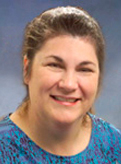
Creating Complex Reports
Scheduled Time: Sunday, October 16th, 8:00 am – 12:00 pm
Intended Audience: Intermediate SAS programmers
Instructor: Cynthia Zender, SAS
In this seminar, we will investigate how eight (8) complex reports were produced with SAS. All the code that produced the reports will be covered, in detail. All report output is produced using ODS (rather than LISTING) output. The reports to be covered include three versions of a standard demographic report, producing a color-banded report with PROC TABULATE, producing a report which uses special fonts (Bissantz SparkFonts) to produce a sparkline report, several graph examples and several unique report ordering examples. Procedures/Topics to be covered include: REPORT, TABULATE, FORMAT, MEANS, FREQ, Macro processing and DATA _NULL_ programming (as used to produce the reports). Refer to the earlier SAS Global Forum paper (http://www2.sas.com/proceedings/forum2008/173-2008.pdf) to see the actual reports which will be discussed in detail.
Instructor Bio:
Cynthia Zender is a Technical Trainer and Curriculum Consultant for SAS Education. She teaches the Base Programming courses, the Report and Graph courses and many of the Business Intelligence courses. Cynthia is the co-author, with Lauren Haworth Lake and Michele Burlew of the book ODS: The Basics and Beyond.
Cynthia lives in Chicago with her husband.

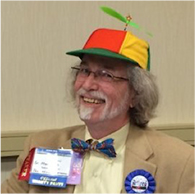
Foundation Knowledge for SAS Batch Processing in Windows
Scheduled Time: Sunday, October 16th, 8:00 am – 12:00 pm
Intended Audience: The expected audience includes programmers of all levels, intermediate to advanced users, and managers
Instructor: Ron Fehd
This course shows how to setup three _les, sas.bat, sasv9.cfg and autoexec.sas, in a project folder so that any my-program.sas can be submitted with my-program.bat which produces my-program.log and my-program.lst. The keys to understanding this process are examined in two chapters, How Windows Disk Operating System (DOS) works, and How SAS Works, which show how each allocates and references environment variables. Three example projects are shown; the first is independent; the second uses common utility programs, such as includes and macros; and the third uses a common autoexec.sas to standardize location names for all folders and libraries.
Purpose: The purpose of this course is to highlight the issues necesssary for the discipline of Test-Driven Development (TDD), an aspect of Agile and Extreme Programming.
Instructor Bio:
Ronald J. Fehd has a B.S. in Computer Science, and began writing SAS programs in 1986. He first published in SAS User Group conferences in 1997 and has presented over sixty papers on macro usage, programming theory and practice, and list processing. In 2001 he was recognized as a peer on SAS-L, the international SAS listserve. He is the author or initial contributor of several hundred pages on the SAS Community Organization wikipedia. His 30 years of SAS experience include 17 years as a data manager, and seven years as tech support. He retired in 2012 and is writing a book of his collected works. At Stakana Analytics his business cards have these titles: Senior Statistical Programmer, Senior Maverick and Theoretical Programmer.

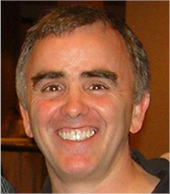
ODS Graphics
Scheduled Time: Sunday, October 16th, 8:00 am – 12:00 pm
Intended Audience: Any Base SAS user
Instructor: Chuck Kincaid
This workshop uses clear explanations and straightforward examples to teach SAS® users how to use ODS Graphics. As a part of Base SAS®, ODS Graphics are a great way to easily create clear graphics that enable any user to tell their story well.
We will start with Statistical Graphics, the built-in graphics that SAS can automatically create from many of its statistical procedures. From there we will explore SGPLOT and SGPANEL, two procedures that can be used to produce powerful graphics that used to require a lot of work. The core of the procedures is explained, as well as some of the many options available. Furthermore, we explore the ways to combine the individual statements to make more complex graphics that tell the story better. Any user of Base SAS on any platform will find great value in the SAS ODS Graphics procedures.
Instructor Bio:
Chuck is the Senior Engagement Director for the Business Intelligence and Analytics Practice of Experis. He studied at Kansas State University and the University of Florida.
Chuck has been with Experis since 1999 and since 2002 he has managed an eclectic team of analytics professionals in their Kalamazoo Center of Excellence. This group has been providing Business Intelligence and Analytics services to almost every industry since the early 90’s.
Chuck has completed or managed a wide variety of projects that include building a path analysis application for a marketing company, creating targeted marketing models for a global entertainment company, teaching analytics to a telecommunications innovation group and developing a simulation system to staff a financial company’s help center.
Chuck regularly speaks at SAS User Groups, the Joint Statistical Meetings and other events, as well as teaches on a wide variety of topics. For some strange reason, he was invited to speak at the International Workshop on “Advanced Analytics and Data Science” in Warsaw, Poland, as well as give the keynote presentation at SESUG 2014. Both were awesome experiences for which he is humbly grateful.
His professional interests are in analytics talent, data science, analytics infrastructure, education and visualization.

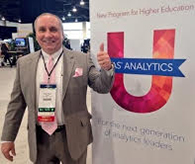
Data Cleaning Techniques for SAS Users
Scheduled Time: Sunday, October 16th, 1:00 pm – 5:00 pm
Intended Audience: The intended audience is all SAS users
Instructor: Kirk Paul Lafler, Software Intelligence Corporation
Are you spending too much time, and money, dealing with data quality issues? SAS® users often turn to off-the-shelf, or user-built, tools to handle messy data issues. Unfortunately, and all too often, many tools in use today fall short and/or have steep learning curves to master. This Data Cleaning Techniques for SAS® Users course explores the many problems found in data, the types of data quality issues, and the various programming techniques users can learn to clean their data, once and for all. Attendees learn how to check and clean character and numeric data issues; handle missing data, duplicate data, and date/time issues; apply data integrity rules to prevent messy data from creeping into a dataset or table, and more.
Instructor Bio:
Kirk Paul Lafler has been programming in SAS® since 1979 and is consultant and founder of Software Intelligence Corporation. He teaches SAS programming classes at UC San Diego Extension, is a SAS Certified Professional, application developer, programmer, data scientist, mentor, and provider of IT consulting services and training to SAS users around the world. As the author of six books including Google® Search Complete! (Odyssey Press. 2014) and PROC SQL: Beyond the Basics Using SAS, Second Edition (SAS Institute. 2013); Kirk has written more than five hundred papers and articles; been an Invited speaker at five hundred-plus SAS International, regional, special-interest, local, and in-house user group conferences/meetings; and is the recipient of 23 “Best” contributed paper, hands-on workshop (HOW), and poster awards.

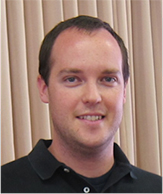
Handy SAS® Functions
Scheduled Time: Sunday, October 16th, 1:00 pm – 5:00 pm
Intended Audience: Intented for any and all SAS users; workshop will proceed at a moderate pace
Instructor: Taylor Lewis, US Office of Personnel Management and George Mason University
This course highlights a number of extremely useful SAS functions that deserve a place in every SAS programmer’s repertoire. Driven by a broad range of examples, the course consists of four modules:
- Manipulating and Extracting Information from Character Variables
- Transforming and Calculating Descriptive Statistics about Numeric Variables
- Functions that Return Information about Attributes of a Data Set
- Date and Time Functions
The target audience is any SAS programmer who wants to learn how to better harness the power of these built-in tools to simplify the amount of syntax required for performing a variety of everyday coding tasks. Since many of these functions are relatively new, even intermediate or advanced programmers will find the course useful.
Instructor Bio:
Taylor Lewis is a PhD graduate from the Joint Program in Survey Methodology at the University of Maryland, College Park. He currently works as a mathematical statistician for the U.S. Office of Personnel Management, and is also an adjunct faculty member in the George Mason University Department of Statistics. An avid SAS user for over 13 years, he holds the SAS Certified Advanced programmer credential and has presented dozens of papers and workshops at SAS conferences covering a variety of topics.

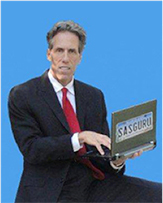
How to Become a Top SAS® Programmer
Scheduled Time: Sunday, October 16th, 1:00 pm – 5:00 pm
Intended Audience: Participants should have a working knowledge of SAS programming. Pace is one chapter at a time, based on the course notes
Instructor: Michael Raithel
This groundbreaking seminar, based on the SAS Press book with the same title, provides clear-cut strategies for becoming a top SAS programmer. Whether you are a student or a statistician, a programmer or a business analyst, this seminar shows how you can streamline and revitalize your career to become the top SAS professional in your organization. Instructor Michael A. Raithel will reveal how to unleash the SAS expert within you by learning how to take advantage of a wide variety of proven SAS-centric job strategies that can help you to maximize your knowledge, skills, accomplishments, recognition and pay.
This seminar features lectures, discussions, and paper-and-pen exercises that focus on reinforcing your own real-world objectives for setting goals that can move your SAS programming career forward. The course details the key SAS programming fundamentals that you should master, strategies for becoming the go-to SAS person in your organization, ways to become involved and recognized in the greater SAS community, how to exploit the best sources of SAS information to make them work for you, and more. You will leave the seminar with a written set of objectives and the knowledge of how to implement them, based on the course material. Armed with the information from this course, your set of goals and objectives, and your own ambition, there are no limits to how far you can go with your SAS programming career.
Instructor Bio:
Michael A. Raithel is a senior systems analyst for Westat, an employee-owned contract research organization in the Washington, DC, area. He has worked with Information Systems in the commercial and government sectors since 1980. An internationally recognized expert in the use of SAS software in mainframe and UNIX environments, Michael is the author of more than 25 SAS technical papers and is a popular lecturer at SAS Global Forum and at regional SAS conferences.
Michael has been a section chair at SUGI, SESUG, and NESUG, and he co-chaired NESUG in 1995. He has been a keynote speaker at WUSS, SCSUG, PharmaSUG, and a Featured Lunchtime Speaker at SAS Global Forum. Michael has taught SAS classes at SUGI, SAS Global Forum, and at American University in Washington, DC. He has written four books for SAS Press, the latest of which is How to Become a Top SAS Programmer. A copy of the first edition of Tuning SAS Applications in the MVS Environment resides in the Smithsonian Institution of American History's Permanent Research Collection of Information Technology.

|

